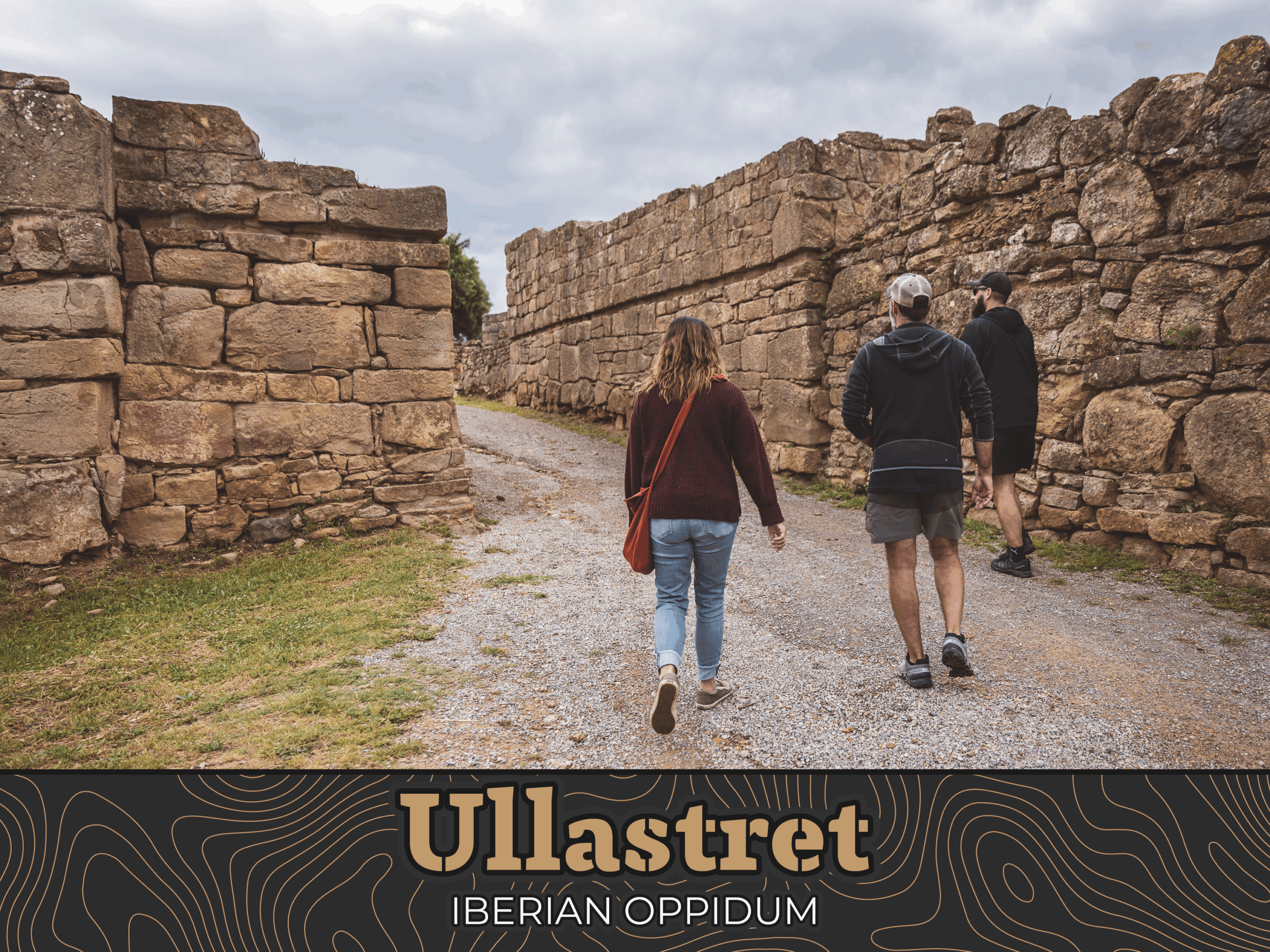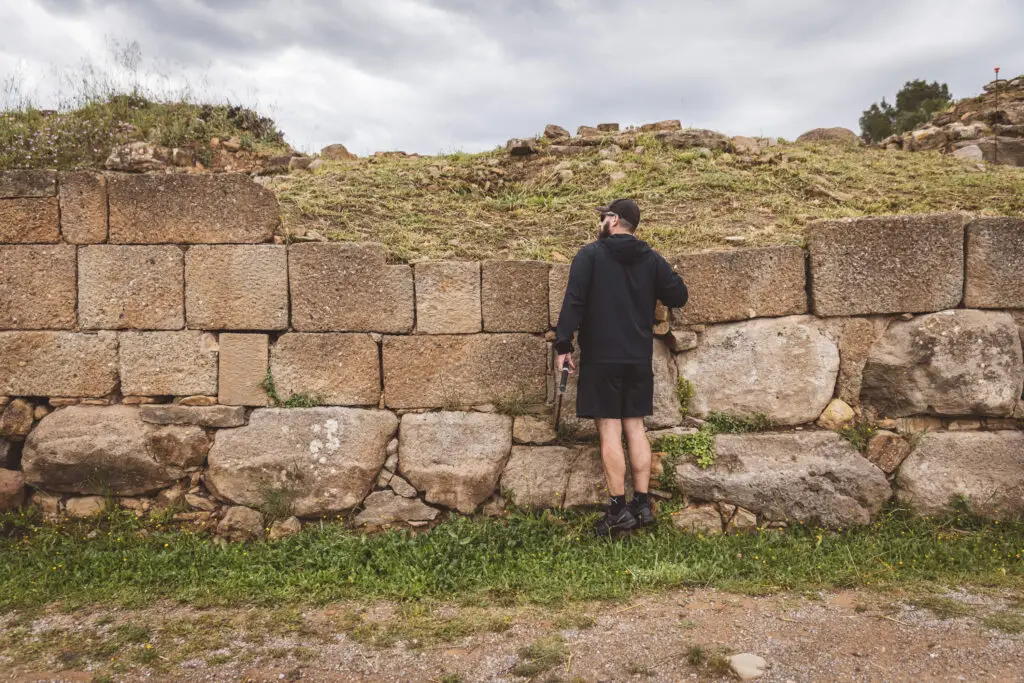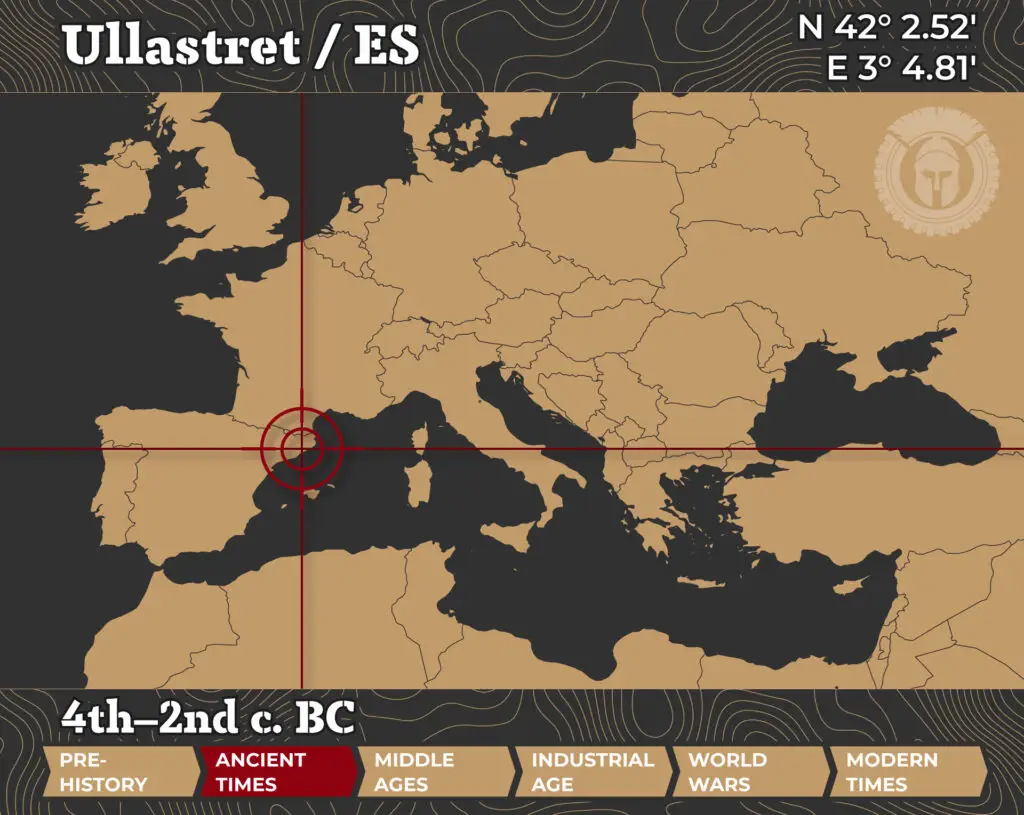
Ullastret 🇪🇸
Content
Ullastret was the first Iberian settlement (oppidum) we visited, and it was immediately impressive.
Even from a distance, the hilltop catches the eye. The closer we got, the more imposing the site became. A massive city wall with regularly spaced towers, a heavy gate structure, and behind it dozens of grain silos and cisterns.
We didn’t expect the Iberians to have built such well-planned and massive structures almost like a Roman fort. They were far more organized than we had assumed. Clearly, we hadn’t looked into them closely enough. Up until now, our image was shaped by small, round huts with thatched roofs. Ullastret completely changed that.

Who were the Iberians?
The Iberians were not a unified people but a group of distinct tribes who lived along the Mediterranean coast of the Iberian Peninsula from the 6th to the 1st century BCE, stretching from Andalusia to southern France. They left behind impressive cities, temples, fortifications, artworks, and a writing system that remains only partially deciphered to this day.
The Iberians were skilled craftsmen, organized complex urban settlements, and maintained trade relations with the Phoenicians, Greeks, and later the Romans. Their culture developed independently but was increasingly shaped by contact with the Mediterranean world until it was eventually absorbed into the expanding Roman Empire.
Ullastret
Ullastret is situated on a prominent hilltop in the Empordà region, about 20 km from the coast. The location was strategically chosen: it offers clear views in all directions, is difficult to access for potential attackers, yet remains close to the major trade routes of the time.
The settlement was established in the 6th century BCE and reached its peak during the 4th to 3rd centuries BCE. Archaeologists estimate that up to 6,000 people lived here at times, it was a large, urbanized community by the standards of the time.
Ullastret was the center of the Iberian tribe known as the Indigetes. It served not only as the political but also as the economic and religious heart of the region.
In the past, the settlement rose from a roughly 3-square-kilometer lagoon known as the Llac d’Ullastret. It was located on an island or peninsula surrounded by water. In the 19th century, the lagoon was drained and the area converted into farmland. Today, the water is gone, but the former island structure is still clearly visible in the landscape.
Fortifications and Urban Layout
The city wall is one of Ullastret’s most striking features. Built in the 4th century BCE, parts of it are still preserved today. Particularly notable are the regularly spaced towers and the massive gate structure. Its design is more reminiscent of later Roman fortifications than what one would typically expect from an Iron Age settlement.
Within the walls, the basic structure of the city is still visible: residential buildings, storage rooms, narrow streets, and open plazas. Particularly striking are the numerous underground silos, used to store large quantities of grain. Several cisterns for water supply have also been uncovered. The entire layout reflects a high level of planning and division of labor.
At the highest point of the settlement was a temple district, likely serving a central religious function. Finds from the area include figurines, vessels, and votive offerings.
The Nailed Skulls
A spectacular discovery made in 2012 attracted widespread attention: several human skulls were found near the city wall. They had been cleanly separated from the rest of the body and in some cases fixed in place with iron nails.
This ritual appears to have been systematic: the skulls were trophies of enemy warriors, displayed publicly. Likely intended as a warning, possibly also as a mark of honor. Archaeologists continue to debate whether this was purely a war ritual or also a form of ceremonial commemoration of the dead.
Child Burials beneath the Houses
In addition to these war-related findings, there is also evidence of personal and family rituals. Beneath several houses, graves of newborns or young children were discovered. For a long time, there was speculation whether these might have been sacrificial practices.
More recent studies suggest that these burials were likely carried out out of respect and familial attachment, rather than for ritual or cultic reasons. The deceased remained within the immediate domestic environment, close to their family.
Museum and Site Today
The site of Ullastret is well developed for visitors today. A walking trail leads through the entire settlement, with information panels available (including in English). The small museum next to the site displays original finds such as pottery, tools, burial items, and votive objects. A particular highlight is the digital 3D reconstruction, which allows visitors to explore the oppidum virtually and gain a vivid impression of what the settlement once looked like.
The entire visit is easy to manage without a guided tour. The atmosphere is quiet, and despite its size, the site feels almost forgotten. The surrounding landscape adds to the experience, making it a peaceful and worthful destination.

How to get there?
- Ullastret at Google Maps,
Coordinates: 42°00’20.7″N 3°04’44.5″E
Website: Museum Website
Sie sehen gerade einen Platzhalterinhalt von Google Maps. Um auf den eigentlichen Inhalt zuzugreifen, klicken Sie auf die Schaltfläche unten. Bitte beachten Sie, dass dabei Daten an Drittanbieter weitergegeben werden.
Mehr Informationen